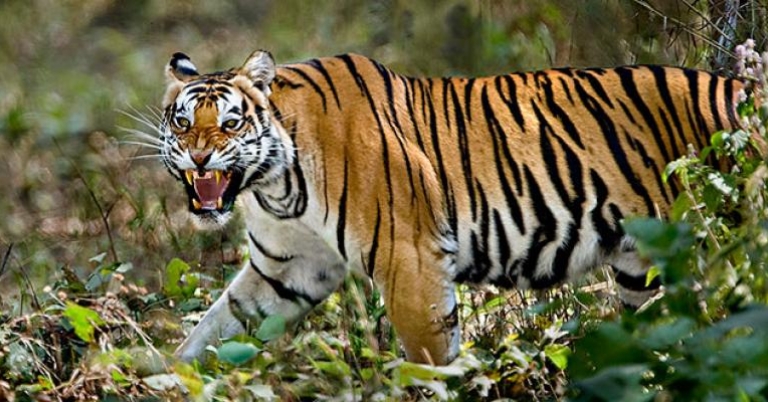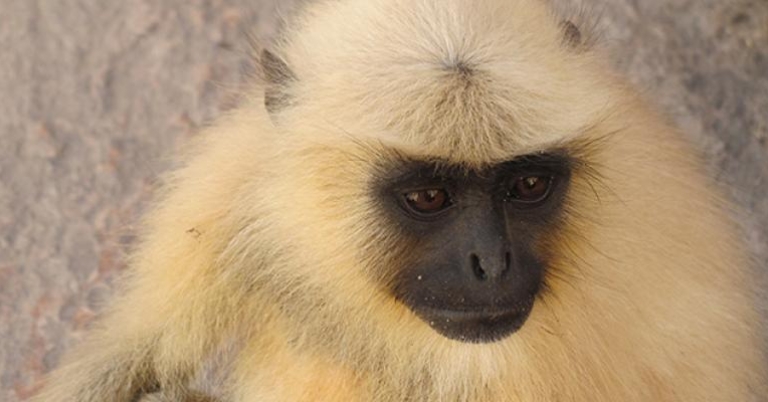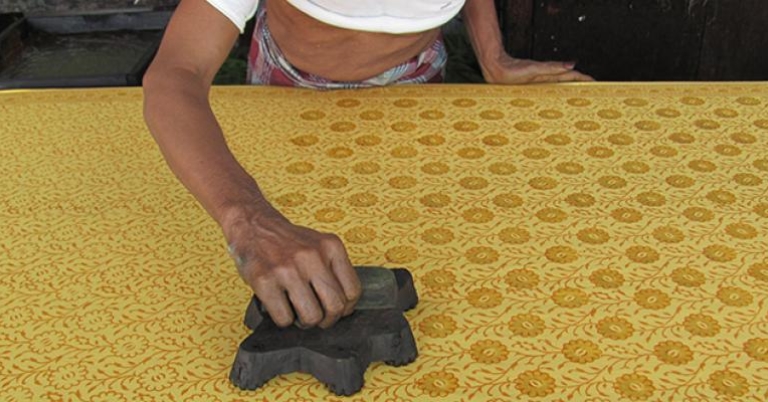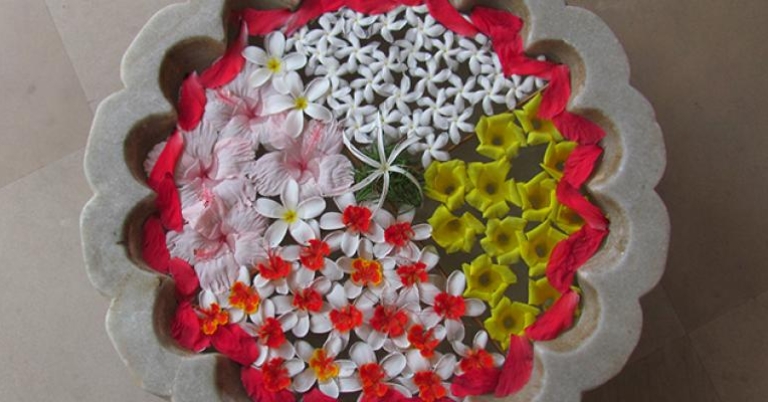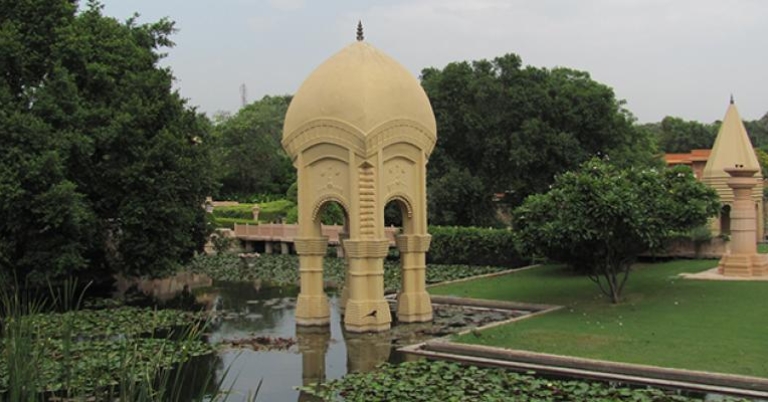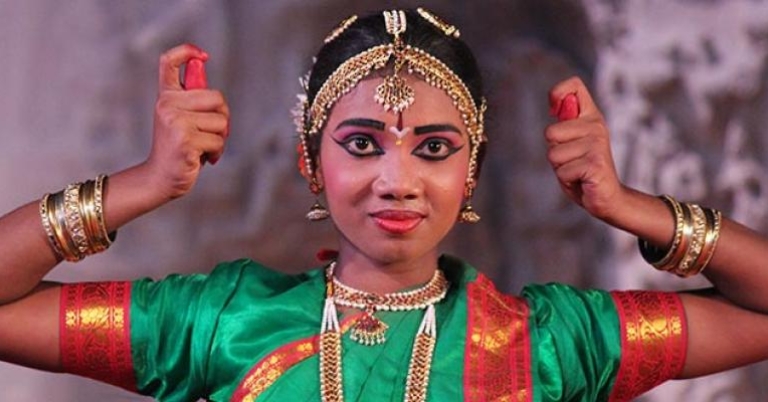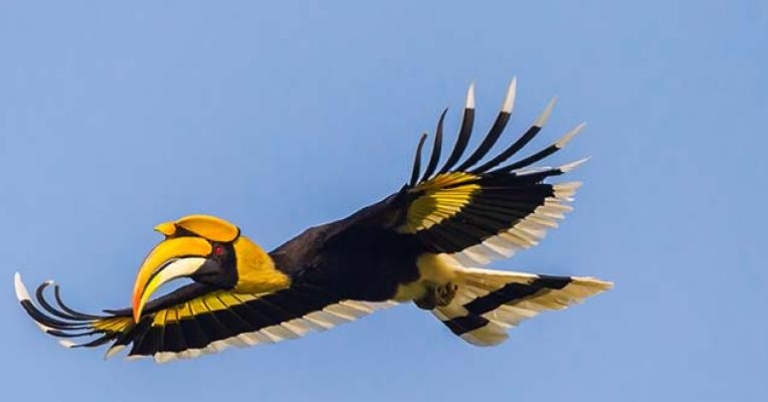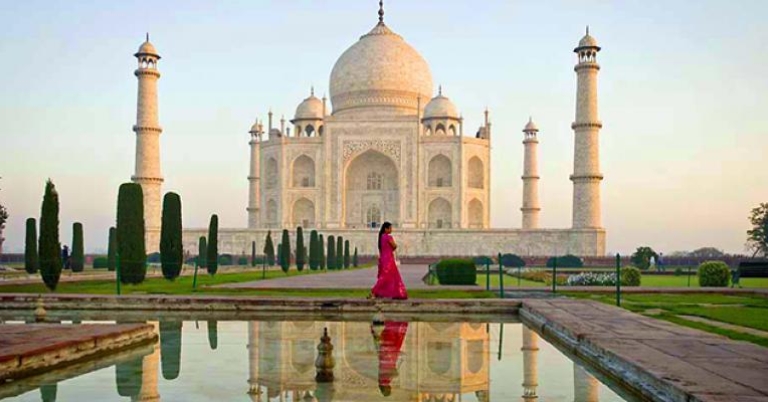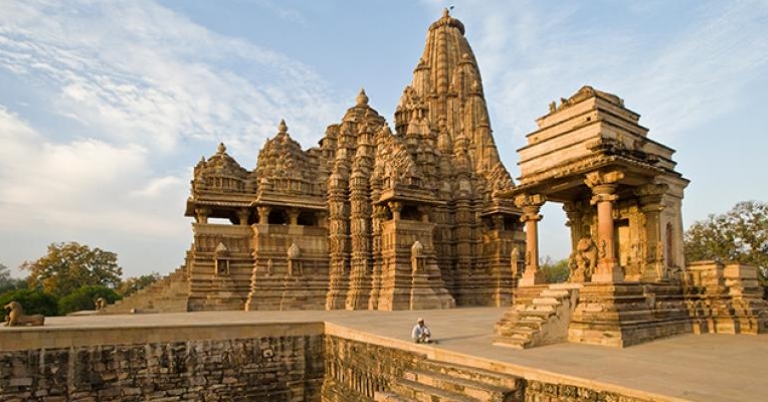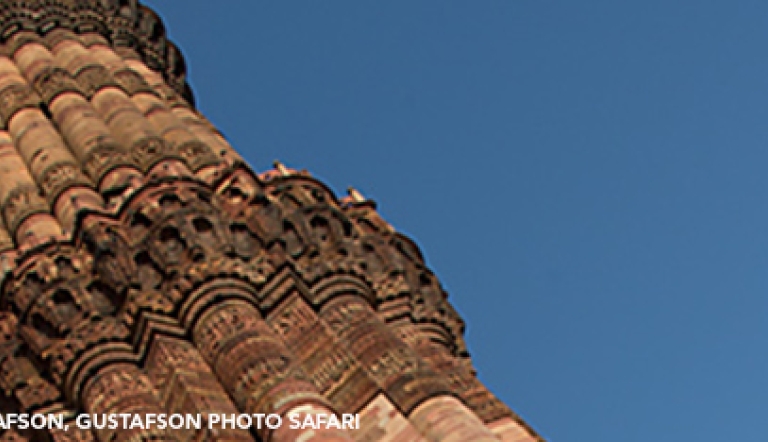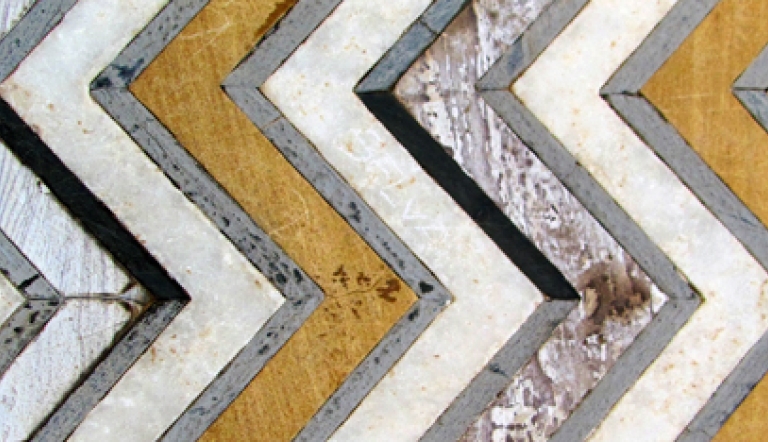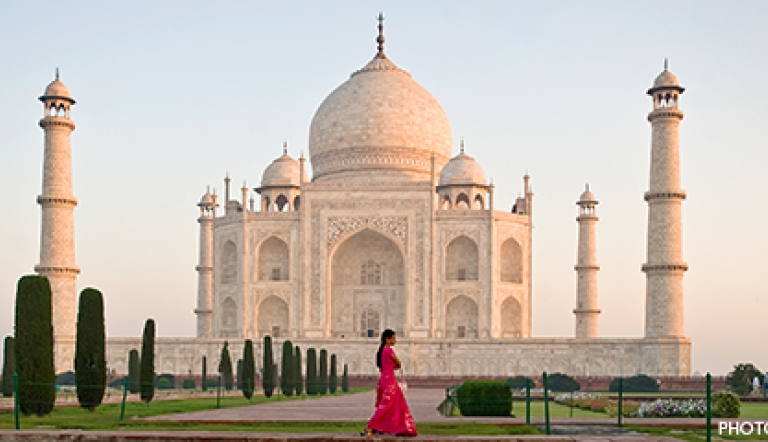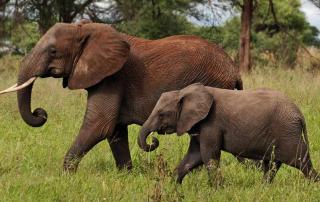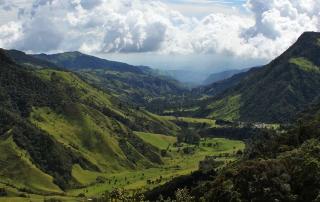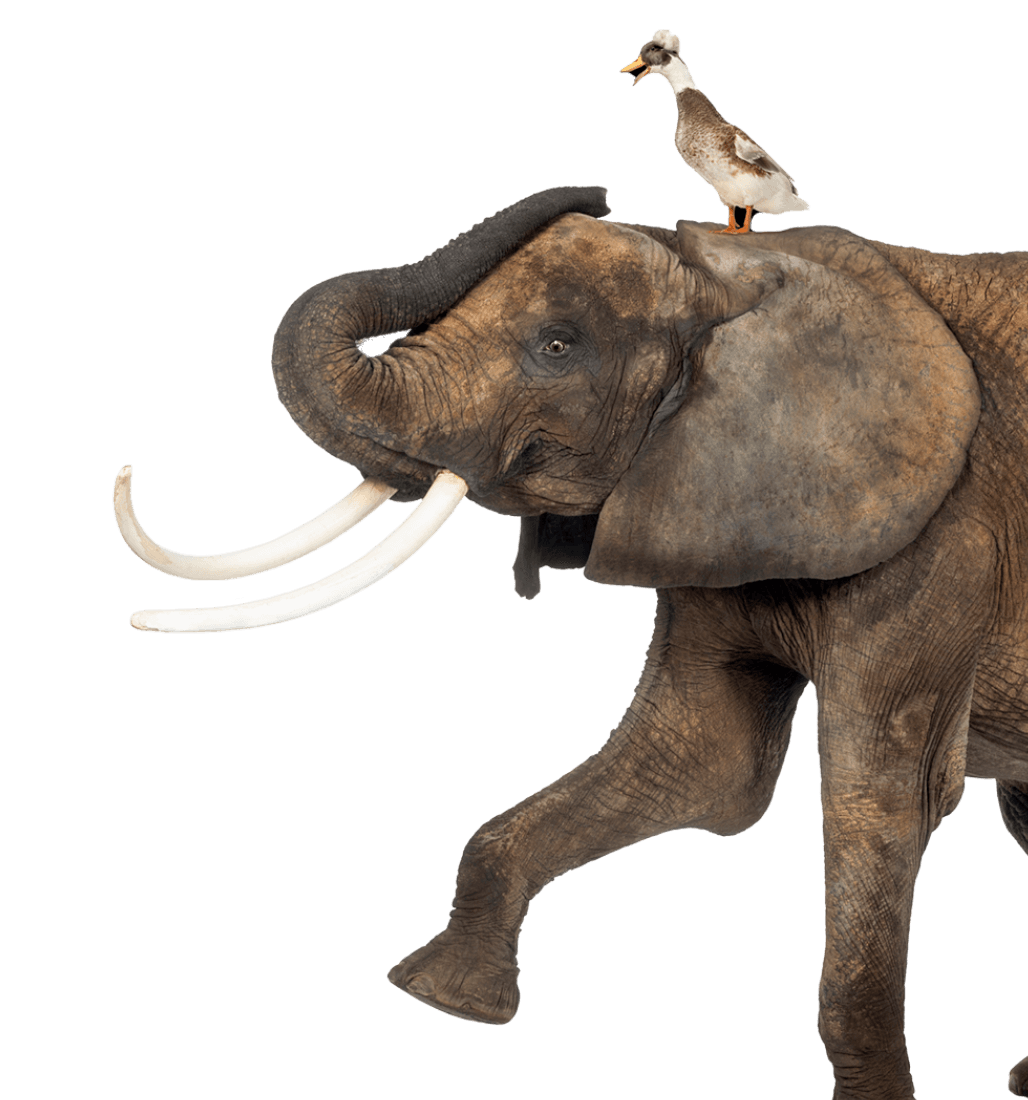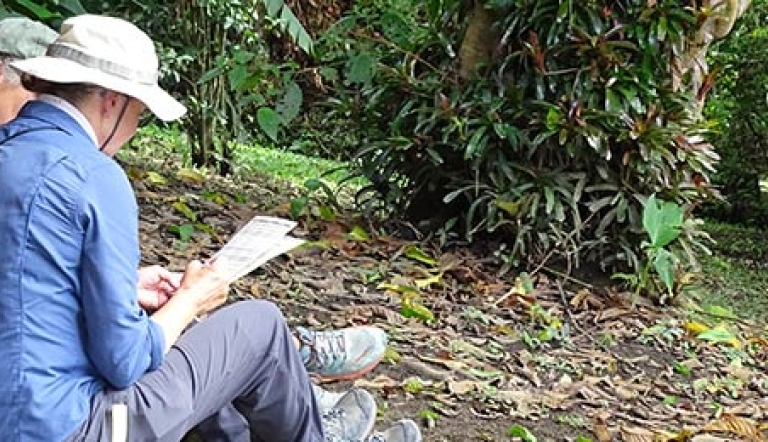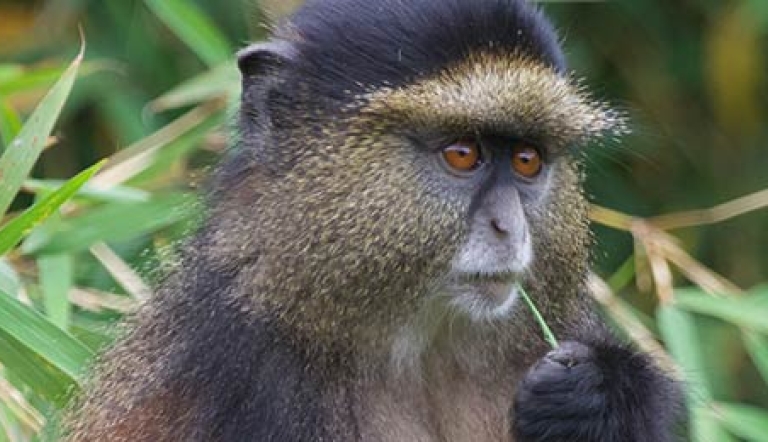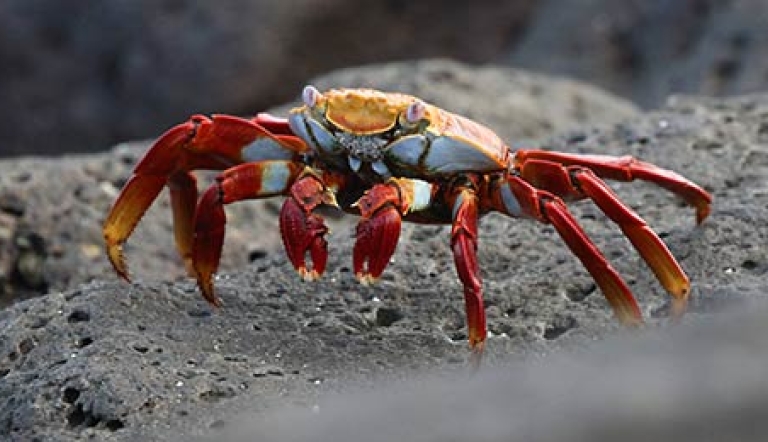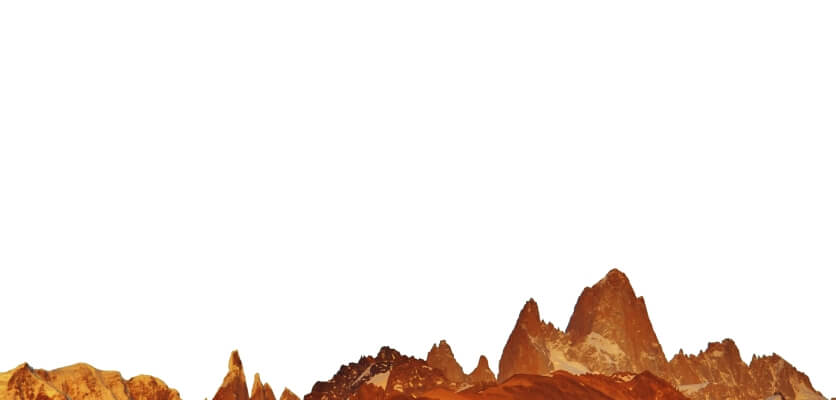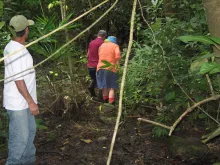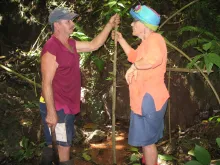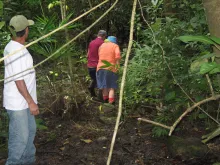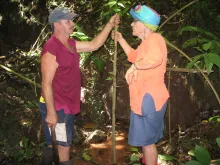India’s mega diversity has created a country of contrasts, from tropical rainforest to coniferous forest, ornately sculpted temples and lantern-lit tribal villages to teeming modern cities, and lush jungles to the subtropical Great Thar Desert.
The cultural wealth of India, both ancient and modern, is vast. Travelers have the opportunity to witness religious traditions on the banks of the River Ganges, experience the astounding bustle of India’s metropolitan areas or simply wander the grounds of the Taj Mahal, one of the most famous architectural structures in the world. The country’s government is working to preserve species, such as wild tigers, and habitats from the Himalayas to the diminishing tropical forest of the north. Indian safaris offer a look into the extensive wildlife species, with more than 350 different species of mammals and around 1,200 species of birds. Peer into the beautiful botanical gardens and parks that India has to offer, while becoming immersed in the greatness of this country. For those interested in adventure travel, the majestic snow-covered mountain range of the Himalayas in the north provides ample opportunity for skiing, mountaineering and trekking, while the golden beaches of India’s long coastlines are ideal for snorkeling and wind surfing. Holbrook will help you to unlock India’s incredible biodiversity, fascinating traditions, intriguing customs and endless natural beauty for travelers and adventurers from all walks of life.
Environments
India, widely considered the world’s most multi-dimensional country, is composed of stunning natural and cultural wonders from border to border. Abundant natural resources and favorable geography have given India a great diversity of ecoregions, extending from tropical rainforest to desert. From the arid Himalayan plateau and deserts of Rajasthan to the tropical backwaters of Kerala and swamps of Kaziranga, the breadth of India’s habitats is only equaled by the biodiversity that it supports.
Wildlife
India has more than 112 national parks, 47 tiger reserves, and 515 wildlife sanctuaries. It is home to over 400 different mammals and 1,300 species of birds, 600 species of reptiles and amphibians, 57,000 species of insects, and an estimated 15,000 species of flowering plants. Many of these creatures are endemic to the subcontinent, such as the Indian Lion, Lion-tailed Macaque, Andaman Teal, Great Indian Bustard, and Himalayan Monal. In addition to the world’s largest populations of Asian Elephant and One-horned Rhinoceros, India harbors 70 percent of the world’s wild Bengal Tiger population. With the accessible Kanha and Bandhavgarh National Parks rated among the world’s best locations to see wild tigers, India holds incredible potential for those seeking outstanding scenery for photography or simply to experience exhilarating moments in the wild.
Culture & History
Like its natural environments, India’s culture represents extreme contrasts: colorful street bazaars, marble mausoleums, ancient royal palaces, and modern day slums. India is decorated by some of the world’s greatest manmade wonders, including the Taj Mahal, Agra’s crowning architectural jewel, and numerous well-preserved ancient relics. There are many ways travelers can discover the complexities of India’s 5,000 year old heritage: studying Indian history through art, architecture, and religion; cross-cultural interaction with community members in rural villages; participating in service projects at local schools; or meeting with experts to discuss the challenges of urbanization, conservation, and related social issues.
Entry & Exit Requirements
U.S. and Canadian citizens must have a valid passport to enter India. Passports must be valid for at least six months after the date of entry.
A visa is required to enter India. For tourism visits not exceeding 30 days, U.S. citizens may apply for an electronic travel authorization at least four days prior to arrival. Visas are not available upon arrival in India, and if you arrive without the correct visa it is possible that you will be deported immediately.
If you are not traveling with a U.S. passport, please check with the Indian Embassy for the requirements based on your nationality.
Health Information
IMMUNIZATIONS
The Centers for Disease Control recommends that all travelers be up to date on routine vaccinations such as measles-mumps-rubella (MMR) vaccine, diphtheria-pertussis-tetanus vaccine, varicella (chicken pox) vaccine, and your yearly flu shot before every trip.
Some physicians recommend that travelers get hepatitis A and typhoid vaccines before visiting India.
Please consult your physician for additional information and recommendations based on your individual circumstances.
MALARIA
The CDC warns that travelers to India are at moderate risk for exposure to malaria. Malaria is caused by a parasite found in Anopheles mosquitos, which are active from dusk until dawn. Prevention is twofold: the use of anti-malarial drugs and the prevention of insect bites. If you choose to use an anti-malarial drug, as recommended by the CDC, see your physician for a prescription.
SUN EXPOSURE
The effects of the sun can be damaging to the eyes and skin. Spending time outdoors exposes you to the sun’s harmful ultraviolet (UV) rays, even on cloudy days. To protect yourself from the sun, use a broad spectrum sunscreen of at least SPF 15, protect skin with clothing, wear a wide-brimmed hat and sunglasses, and drink plenty of fluids.
Currency
The currency of India is the Indian Rupee.
Electricity
The electrical current in India is 230V 50Hz AC. Travelers from the United States need to use a converter.
Time Zone
The time zone of India is India Time Zone (UTC+05:30).
India does not observe Daylight Saving Time.
Departures and arrivals on flight schedules are listed in the local time.
Communications
PHONES
India’s country code is +91.
To call India (from the U.S.): Dial 011-91-(xx-xxx-xxxx)
To call the United States: Dial 001-(xxx-xxx-xxxx)
Please check with your cell phone provider if you’re unsure whether or not your cell phone will work internationally. Be aware that you are likely to incur additional charges for international use. It may be more affordable to purchase a local SIM card upon arrival.
INTERNET
Internet kiosks are commonly available in India, and many hotels offer Internet. WiFi is not as common, but can be found in some areas. Beware of using credit cards online, especially in public places.
Reading List
FIELD GUIDES
Birds of India
Richard Grimmett, Carol Inskipp & Tim Inskipp
Thoroughly revised, with 73 new plates and many others updated or repainted, the second edition of the masterful Birds of India now features all maps and text opposite the plates for quicker and easier reference.
India Wildlife, A Folding Pocket Guide to Familiar Animals
James Kavanagh
A folding wildlife guide designed for quick reference in the field. It features more than 140 creatures often seen in India (from tigers and lions to flying lizards) with full-color images and text. Part of the great Pocket Naturalist series.
A Naturalist's Guide to the Birds of India, Including Pakistan, Nepal and Bhutan
Bikram Grewal
A handy field guide to 280 bird species common to the Indian subcontinent. In beautiful John Beaufoy style, the guide's colorful and high-quality photographs are accompanied by detailed species descriptions, size distribution, preferred habitats and nomenclature.
India Birds
James Kavanagh
A folding wildlife guide designed for quick reference in the field. With full-color images and text, it features more than 100 birds often-seen in India.
MAPS
India Adventure Map
National Geographic Society
The most detailed shaded relief map (at a scale of 1:2,100,000) of India available.
India Northwest Adventure Map
National Geographic Maps
A double-sided full-color map of Northwest India at a scale of 1:1,400,000 with good shaded relief, topographic detail, roads, waterways and basic travel information. Printed on waterproof, tear-resistant paper. Two sides. 20 x 31 inches.
GUIDEBOOKS
Eyewitness Guide India
Eyewitness Guides
A handsome, beautifully illustrated guide to India. It features color photographs, history and plenty of background information.
National Geographic India
Louise Nicholson
Veteran guidebook author Louise Nicholson teamed up with National Geographic photographers for this profusely illustrated travel guide.
Culture Smart! India
Becky Stephen
A concise, well-illustrated guide to both social and business customs in India.
Eyewitness Guide Delhi, Agra and Jaipur
Anuradha Chaturvedi
With chapters on Taj Mahal, Amber Fort Palace, Keoladeo Ghana National Park, Red Fort and dozens of other highlights for the traveler, this compact, gorgeously illustrated guide to Delhi and its environs features 900 color photographs, maps and site plans.
Insight Guide India
Insight Guides
An illustrated overview of India, with essays on its attractions, history, nature and culture. Includes introductions to the major temples, forts and wildlife sites and plenty of color photos and maps.
Lonely Planet India Phrasebook
Omkar Koul
A handy, palm-sized guide to pronunciation, basic grammar and essential vocabulary for the traveler.
NATURAL HISTORY
Tiger, Soul of India
Valmik Thapar
This lavish tribute features 250 color photographs, examples of art over the ages and engaging essays by tiger wallah Thapar, who has spent 30 years observing tigers.
Tigers in Red Weather, A Quest to See the Last Wild Tigers
Ruth Padel
"You cannot plan to see a tiger," writes Ruth Padel. "It is like planning to fall in love." Her lyrical exploration of the world of the tiger takes her across 11 countries in two years. Padel is a poet by trade and the great-great-granddaughter of Charles Darwin.
Wonders of the Indian Wilderness
Erach Bharucha
With 2,000 full-color illustrations, this sumptuous celebration of India's biodiversity is visually stunning. A deluxe volume with a slipcase.
HISTORY & CULTURE
India
Stanley Wolpert
Wolpert's reflections on India -- its religion and philosophy, its art, culture and politics -- make for a literate, succinct primer.
City of Djinns: A Year in Delhi
William Dalrymple
Dalrymple infectiously interweaves his own experiences over a year in Delhi with its art, architecture, history and literature.
Malgudi Days
R. K. Narayan
Wonderful tales from one of India's foremost writers about a fictional South Indian town populated by quirky characters whose unique approaches to tradition and modernity are the stuff of great short stories.
Curry, A Tale of Cooks and Conquerors
Lizzie Collingham
This cultural history with recipes is appetizingly organized as a menu (biryani, vindaloo, chai, etc.). Collingham explores the origins and spread of Indian food and the interplay between Muslim, Hindu, Portuguese and British traditions on the subcontinent.
A Free Man
Aman Sethi
Sethi conjures Mohammed Ashraf and his indelible group of day laborer friends in the Old Delhi Railway Station in this searing portrait of life -- and injustice -- in contemporary India.
Behind the Beautiful Forevers
Katherine Boo
A Pulitzer-Prize winning journalist and writer at The New Yorker, Boo turns her four years among the people of a Mumbai slum into an absorbing tale of the clash of India, new and old, prosperous and disenfranchised.
In Spite of the Gods
Edward Luce
Luce tackles the challenges and reality of the world's largest democracy with insight and balance in this portrait of a nation in transition.
India Becoming
Akash Kapur
Kapur returns to the country of his birth for this revealing and rich tapestry of contemporary India as told through the lives of ordinary people.
India, A Sacred Geography
Diana L. Eck
Professor of comparative religion and Indian studies at Harvard, Diana Eck turns her interest in temples and places of pilgrimage into a celebration of the diversity of popular religious traditions in India in this richly rewarding travelogue.
India, A Short History
Andrew Robinson
Robinson's inviting introduction to India chronicles the rise and fall of the India's kingdoms and the unified nation's eventual economic decline, which led to the British subjugation of the Mughal Empire in the mid-19th century.
May You Be the Mother of a Hundred Sons, A Journey Among the Women of India
Elisabeth Bumiller
A wonderfully written and fascinating portrayal of Indian women from Bollywood stars to Indira Gandhi to prostitutes. It's an insightful portrait of the country as seen through the eyes of its women.
Midnight's Descendants, A History of South Asia Since Partition
John Keay
An illuminating history of South Asian countries India, Pakistan and Bangladesh, their interconnectedness and present challenges.
Rogue Elephant, Harnessing the Power of India's Unruly Democracy
Simon Denyer
An astute examination of contemporary Indian politics and economics. Simon Denyer, former Indian bureau chief for the Washington Post, writes on the crisis of confidence in the world's largest democracy.
What the Buddha Taught
Walpola Sri Rahula
A classic account of Theravada Buddhism by a respected monk and scholar from Sri Lanka. Provides translations from original texts with explanations for Western readers. A good foundation for any visitor to Southeast Asia.
Taj Mahal
M.C. Joshi, Jean-Louis Nou & Amina Okada
This lavish portrait features 158 full-color photographs (including four magnificent foldout panels) by the extraordinary Jean-Louis Nou. With grand exterior views, filigreed inscriptions and bejeweled floral mosaics.
Gandhi, An Autobiography, or the Story of My Experiments with Truth
Mohandas K. Gandhi
There is no substitute for reading Gandhi in his own simple, direct prose. A highly recommended glimpse into the personality and life of this remarkable figure.
